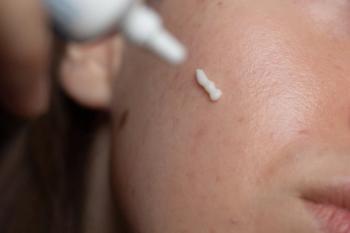
Adam Friedman, MD, FAAD: Spotlighting Disparities in Lichen Planus Screening and Treatment
Friedman discusses survey findings revealing inconsistent screening, outdated assumptions, and lack of FDA-approved therapies for lichen planus.
In a recent interview with Dermatology Times, Adam Friedman, MD, FAAD, professor and chair of dermatology at the George Washington University School of Medicine and Health Sciences, shared insights from a new study examining how US dermatologists screen for and manage lichen planus.1
The cross-sectional study, published in Dermatology and Therapy,2 surveyed more than 400 dermatologists and uncovered wide variation in clinical practices, especially regarding screening for comorbidities and treatment approaches for this chronic inflammatory skin condition.
“I love me some lichen planus,” Friedman said. “I've thought a lot about why that's the case. I think it's because it's kind of [the] Wild West. We do not have management guidelines. There are no FDA-approved therapies. That offers a fun challenge for me and my colleagues to take care of a really disabling, chronic inflammatory skin disease.”
This “Wild West” mentality, he explained, has created a scenario in which care is driven more by individual clinical training and subjective experience than evidence-based standards.
What the Study Revealed
The primary aim of the study was to “put a finger on the pulse” of how the dermatology community screens for comorbidities, Friedman explained. With emerging data linking lichen planus to a variety of systemic issues from thyroid disease to hypertension and psychosocial conditions, Friedman and his team wanted to understand how these risks were being addressed in practice.
“Right off the bat, a glaring gap was identified, which was that roughly a third of the 400-plus respondents [who] did participate in the study didn't screen for anything,” he said.
Historically, dermatologists have been taught to screen for hepatitis C when managing lichen planus, based on older associations and select studies, he added.
“When I was in my training, I remember very distinctly that if you see lichen planus, assume hepatitis, or you have to screen for hepatitis at a bare minimum,” Friedman said. “Now that's actually not necessarily correlated to what we're seeing epidemiologically. It's really more oral erosive lichen planus.”
In the study, those who screened for comorbidities most commonly looked for hepatitis C, followed by hepatitis B. Yet the incidence of the infection in patients with lichen planus was actually quite low, Friedman emphasized.
Meanwhile, screening for more prevalent and clinically relevant comorbidities such as hypertension, anxiety, and depression was frequently missed, despite their higher incidence rates in patients with lichen planus.
A Treatment Landscape Without FDA Guidance
Treatment approaches for lichen planus were equally varied. The vast majority of respondents reported relying on topical corticosteroids. Far fewer opted for systemic immunosuppressive agents or phototherapy, despite these approaches being supported by clinical evidence.
“These findings underscore the absence of standardized, evidence-based guidelines for lichen planus care,” Friedman said. “Practitioners are often left to rely on training background and personal experience, leading to wide variations in care and, ultimately, potential disparities in patient outcomes.”
Future Directions
Friedman believes these data serve as a crucial starting point for developing better protocols and, eventually, official treatment guidelines. “I know what I do, but I think it's great to have an understanding of what's going [on] out there to direct future efforts for, whether they're management strategies or guidelines,” he said.
More awareness, more research, and more structured approaches are needed, Friedman concluded.
References
- Study reveals gaps in screening and treatment practices for a chronic inflammatory skin condition among US dermatologists. News release. George Washington University. April 25, 2025. Accessed June 2, 2025.
https://mediarelations.gwu.edu/study-reveals-gaps-screening-and-treatment-practices-chronic-inflammatory-skin-condition-among-us - Vidal SI, Menta N, Friedman A. Lichen planus: a cross-sectional evaluation of US dermatologists’ comorbidity screening and management patterns. Dermatol Ther (Heidelb). 2025;15:1455-1465.
doi:10.1007/s13555-025-01422-1
Newsletter
Like what you’re reading? Subscribe to Dermatology Times for weekly updates on therapies, innovations, and real-world practice tips.


















